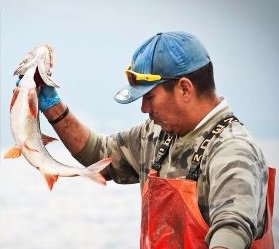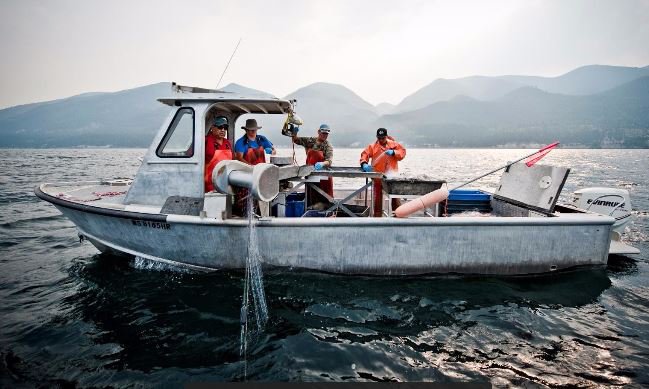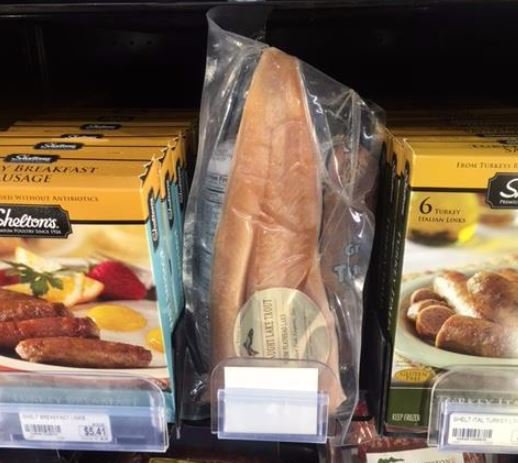Filet of Predator
The Confederated and Salish and Kootenai Tribes have a multi-faceted approach to removing Lake Trout from Flathead Lake, including marketing frozen filets
- October 10, 2017
- John Harrison

Lake Trout are not native to Flathead Lake in Northwestern Montana, and they're an undesirable species when they compete with native Bull Trout. But they're fun to catch, taste great, and can now be purchased in grocery stores as frozen filets, thanks to an innovative project of the Confederated Salish and Kootenai Tribes.
This month Barry Hansen of the Salish and Kootenai Tribes reported to the Council on progress of an ongoing project to remove nonnative Lake Trout from the lake to reduce predation and assist the rebuilding of native Bull Trout. For several years, the tribes have been implementing a multi-faceted program to reduce Lake Trout through an effort that includes increasing the Lake Trout fishing limit to 100 per day, a fishing derby, gill netting, and a business enterprise selling frozen fish filets.

The goal is to remove about 143,000 Lake Trout every year, a number that biological modeling suggests will allow the Bull Trout population to rebound. To date, that goal is still elusive by about 40,000 fish, but Hansen said the tribes are having another, larger, gill net boat built so that the netting can be more effective. Netting only occurs in the southern half of the lake, which is part of the reservation. Bycatch from netting, initially a concern, has been remarkably low – just 39 Bull Trout caught among 48,617 Lake Trout this year. The tribes do not plan to eradicate Lake Trout, only significantly reduce their numbers so that the Bull Trout population can improve.
Recreational anglers are important partners in the effort.
“The anglers have bought into it,” Hansen said. “They complement us because they are able to catch smaller fish than we can with the nets, as the nets tend to catch juvenile Bull Trout if the mesh is too small.”
The overall effort appears to be working.
“The Lake Trout population estimates are now beginning to trend downward,” Hansen said. “This is indicative of the early stages of a successful mitigation program.”
He said the tribes have the equipment and staff in place for a successful, long-term program, but consistent funding over time is a concern.
“To do this kind of work we need a stable, long-term source of funding, and so we resolved to make this Lake Trout removal pay for itself,” Hansen said. “We are now marketing and selling Lake Trout to help pay for the program.”
Lake Trout and whitefish filets are packaged and frozen and sold in grocery stores and online through a tribal business called Native Fish Keepers, Inc.
“We have these early signs that the removal program has been successful,” Hansen said. “We’re careful to keep our eyes on the target, though, which is preserving native fish. Based on our modeling, native fish should respond positively with enough time.”

Frozen Lake Trout filets in a grocery store.



